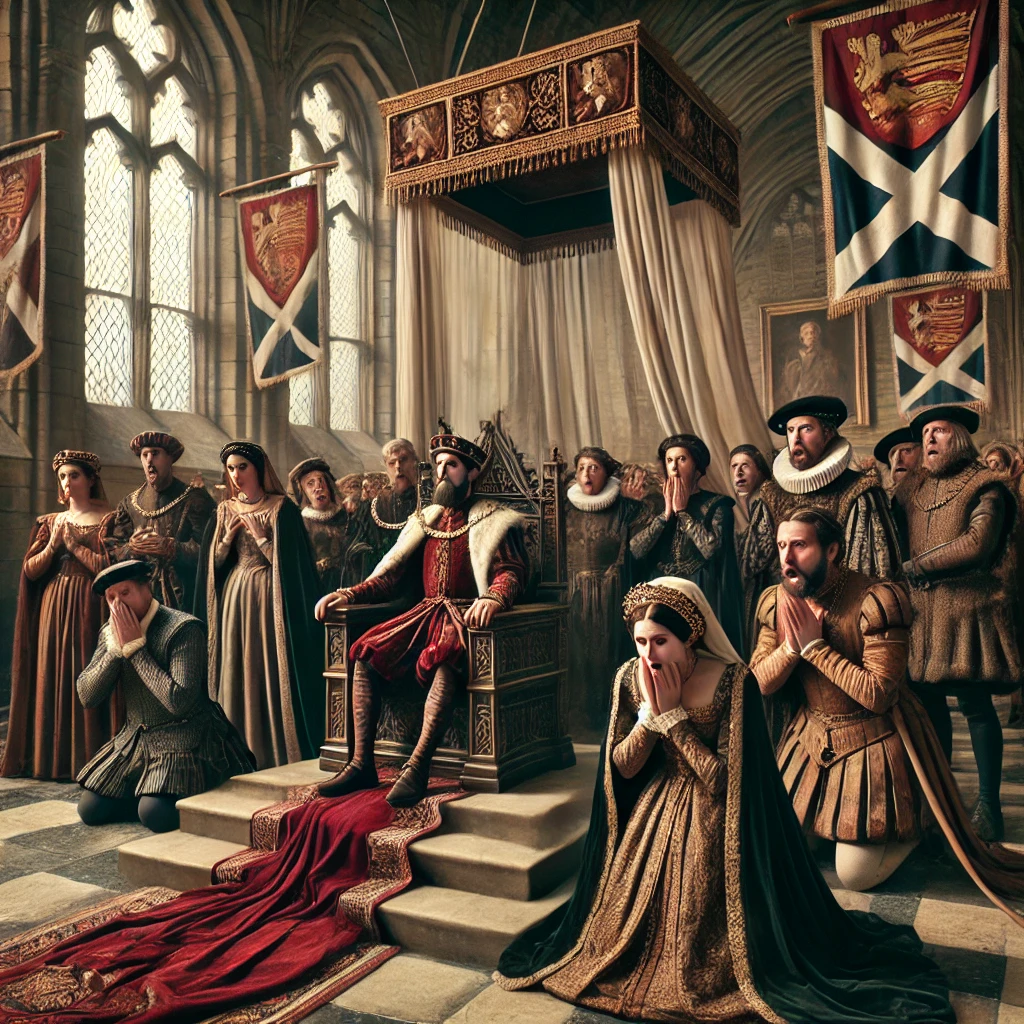On this day in 1437, King James I of Scotland was assassinated at the Blackfriars Monastery in Perth. James I’s reign was marked by political intrigue and his attempts to consolidate royal power, but his untimely death sent shockwaves through the Scottish monarchy. His murder was not just an act of treason but a pivotal moment that highlighted the fragile nature of medieval Scottish rule.

The Road to Assassination
James I had spent much of his early life as a prisoner in England, taken captive at the age of 12 by King Henry IV. During his 18 years in captivity, he received an education that made him a refined and well-learned ruler. Upon his return to Scotland in 1424, he set about strengthening royal authority, tackling corruption, and reforming Scotland’s administration. However, his efforts to curb the influence of the powerful noble families created many enemies among the aristocracy.
The plot against James I was orchestrated by Sir Robert Graham, a nobleman disillusioned with the king’s centralization of power. On the night of February 20, 1437, Graham and his conspirators ambushed the king at Blackfriars Monastery. In a desperate attempt to escape, James tried to flee through an underground passage, only to find it had been sealed off to prevent tennis balls from rolling into it—a cruel twist of fate that left him trapped. The assassins brutally murdered him, stabbing him dozens of times.

The Aftermath and Its Impact on Scotland
The immediate aftermath of James I’s assassination was marked by swift retaliation. His widow, Queen Joan Beaufort, and their supporters acted quickly to hunt down the conspirators. Within months, Graham and his accomplices were captured and subjected to gruesome executions, serving as a stark warning against future acts of regicide.
Despite his tragic end, James I’s policies did not die with him. His vision for a stronger monarchy was carried forward by his son, James II, and later rulers who sought to limit the unchecked power of the Scottish nobility. Over time, his reign became a foundation for the centralization of the Scottish state, contributing to the eventual formation of a more unified and resilient kingdom.
Legacy of a Fallen King

James I’s assassination underscored the volatility of medieval Scotland, where kings often had to fight as much against their own nobles as against external enemies. His rule, though cut short, set a precedent for future monarchs who would continue the struggle to assert royal power over rebellious factions. His legacy also survives in Scottish literature, as he was a poet-king, credited with writing The Kingis Quair, a heartfelt poetic reflection on his captivity and love for Joan Beaufort.
Today, historians remember James I as a reformist ruler whose ambition to strengthen the monarchy cost him his life. His tragic fate remains one of Scotland’s most infamous political murders, a reminder of the dangers that came with wielding power in a fractured medieval kingdom. The echoes of his policies still resonate in discussions of governance and authority, making his reign a significant chapter in Scotland’s turbulent history.
